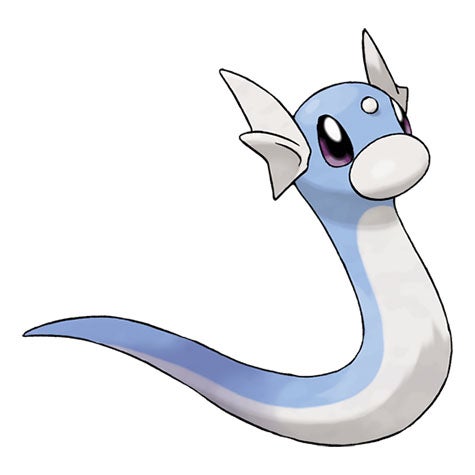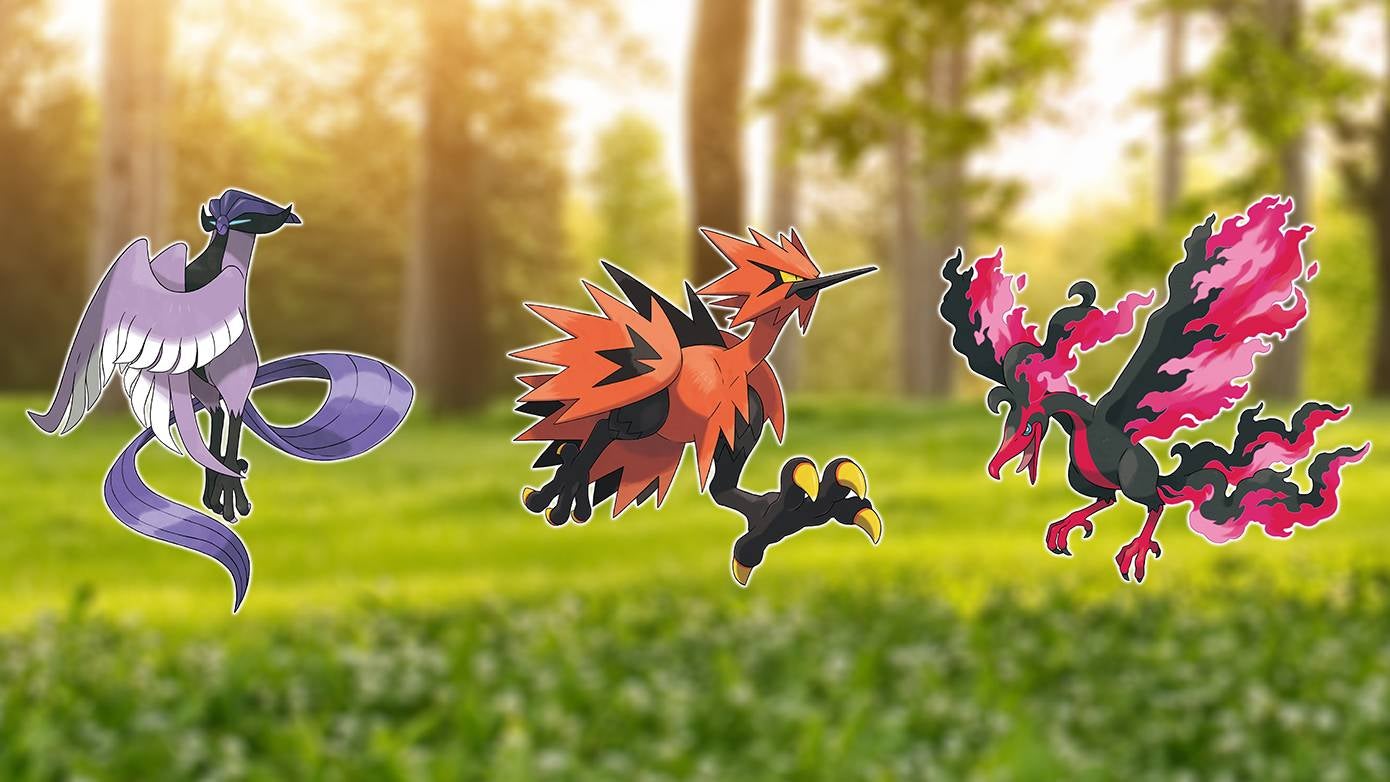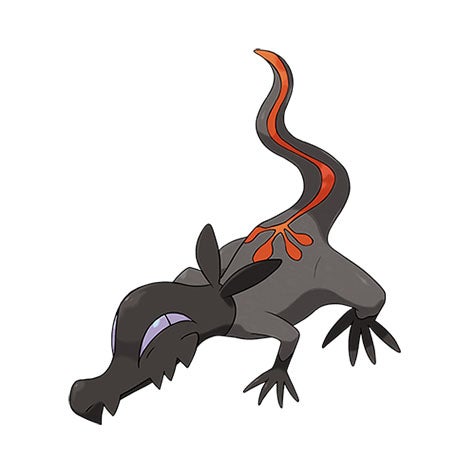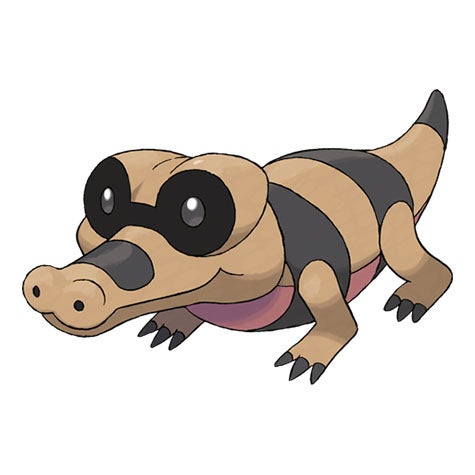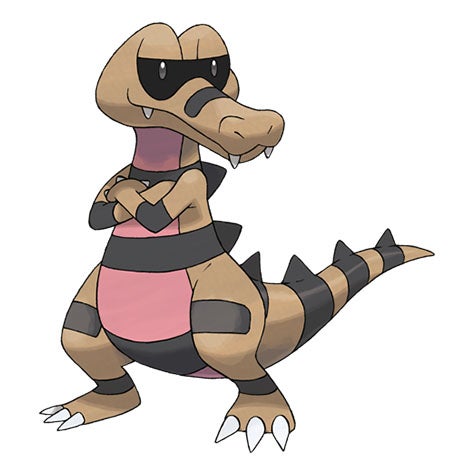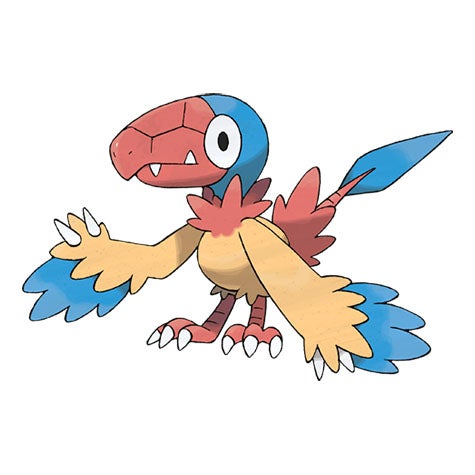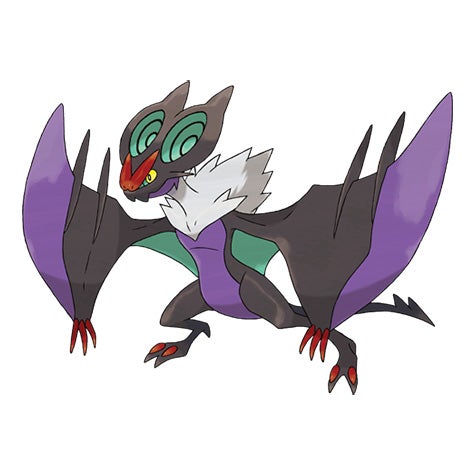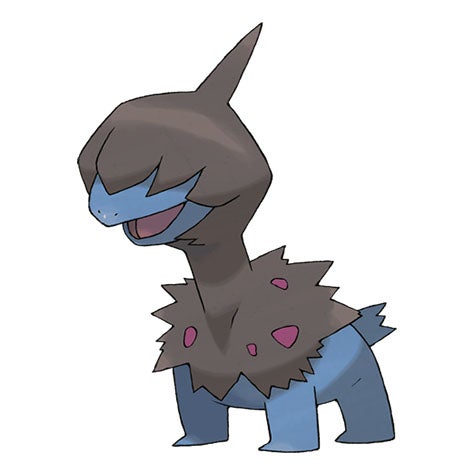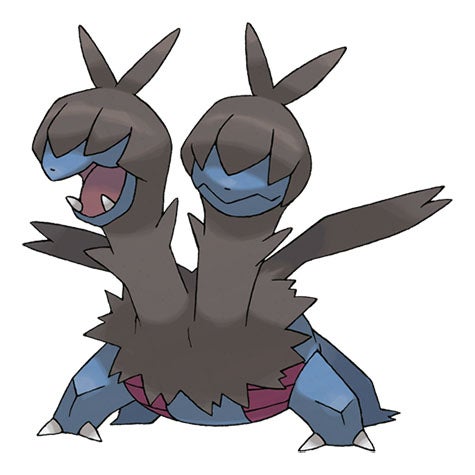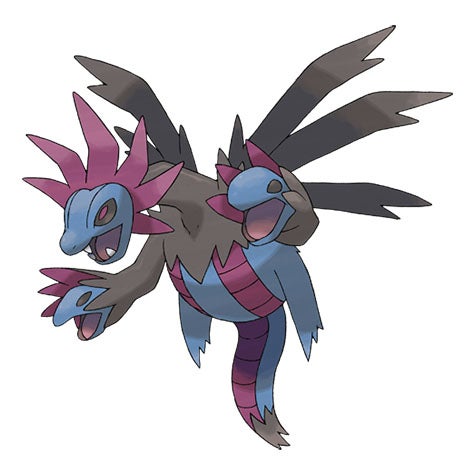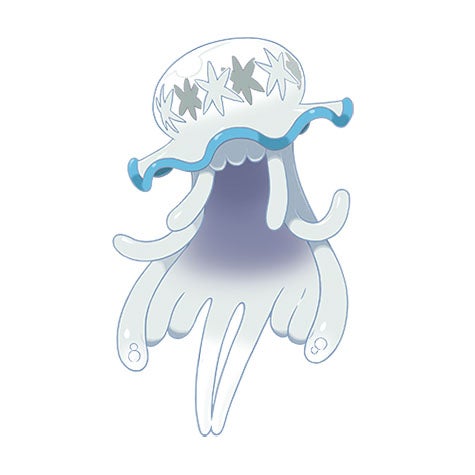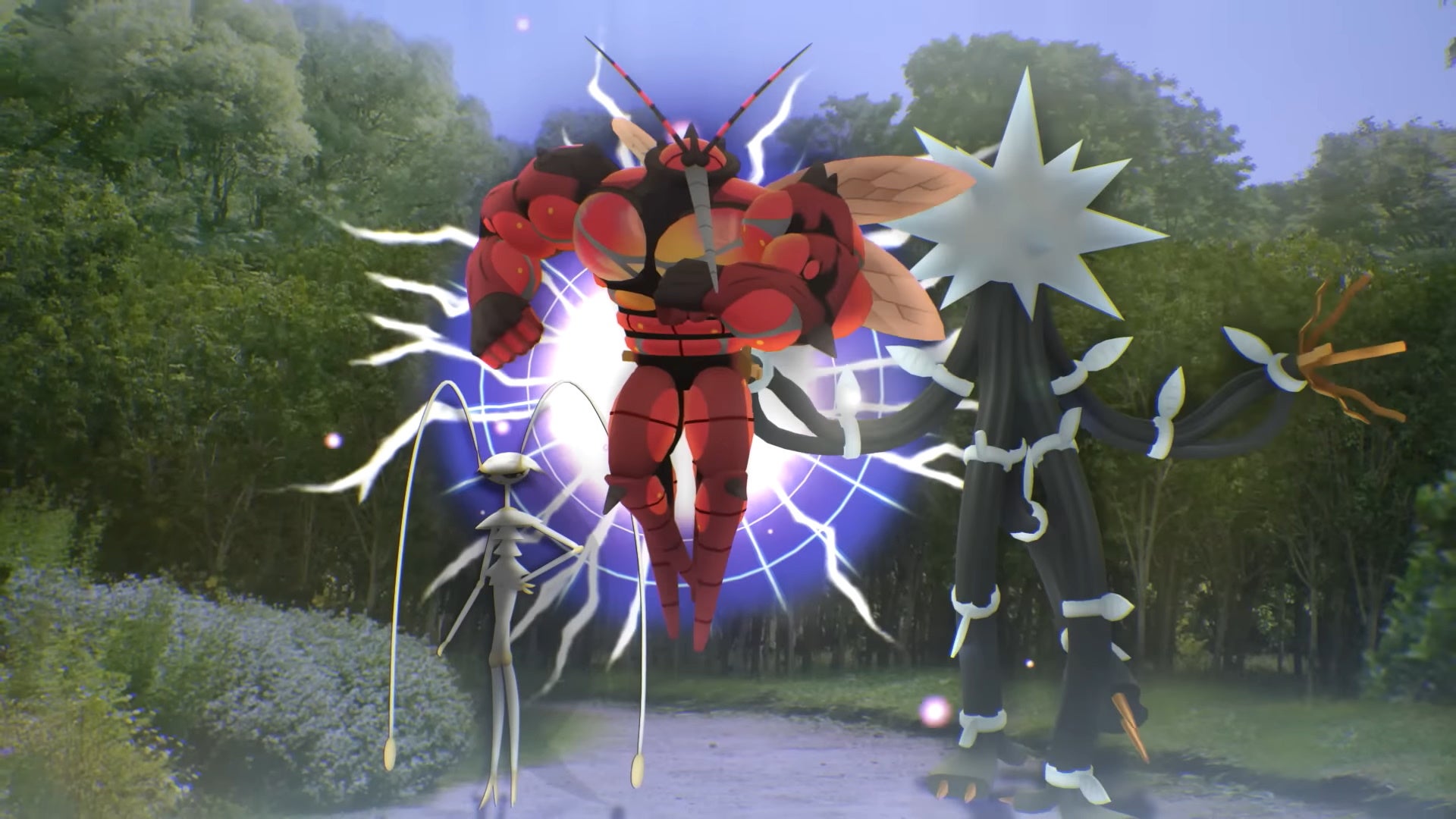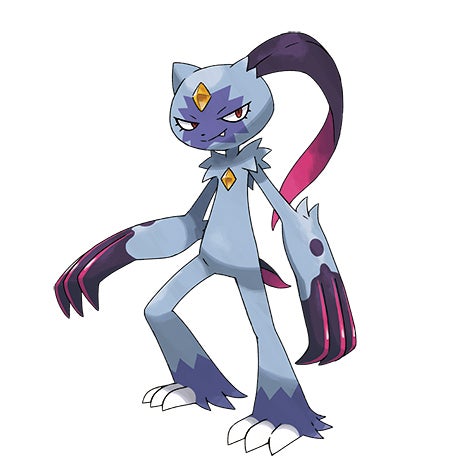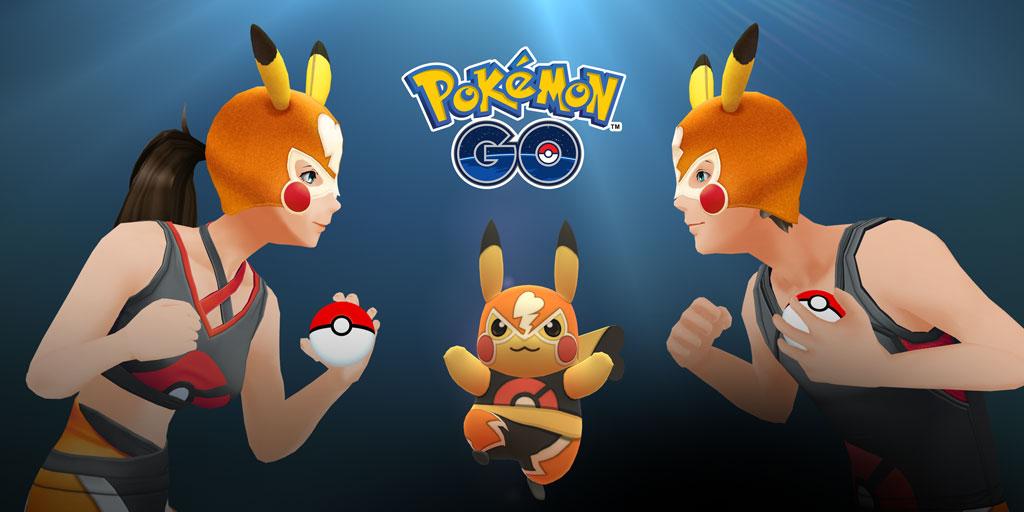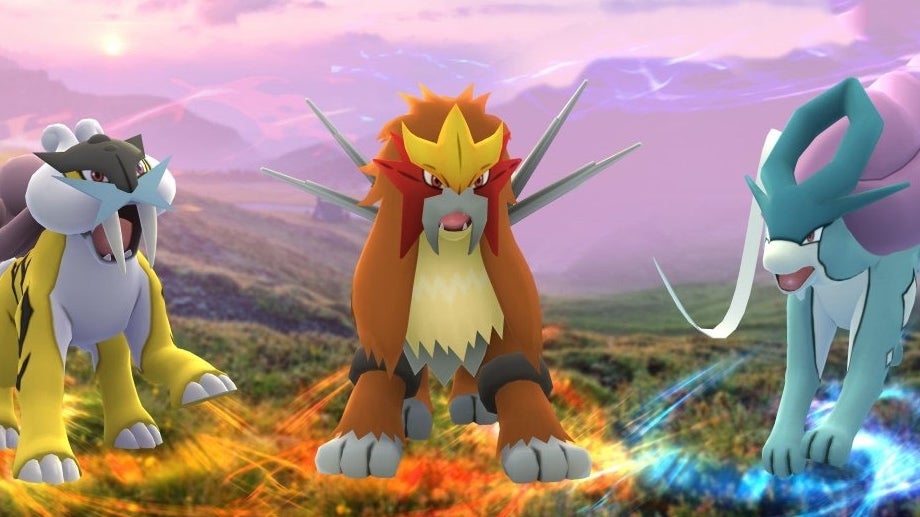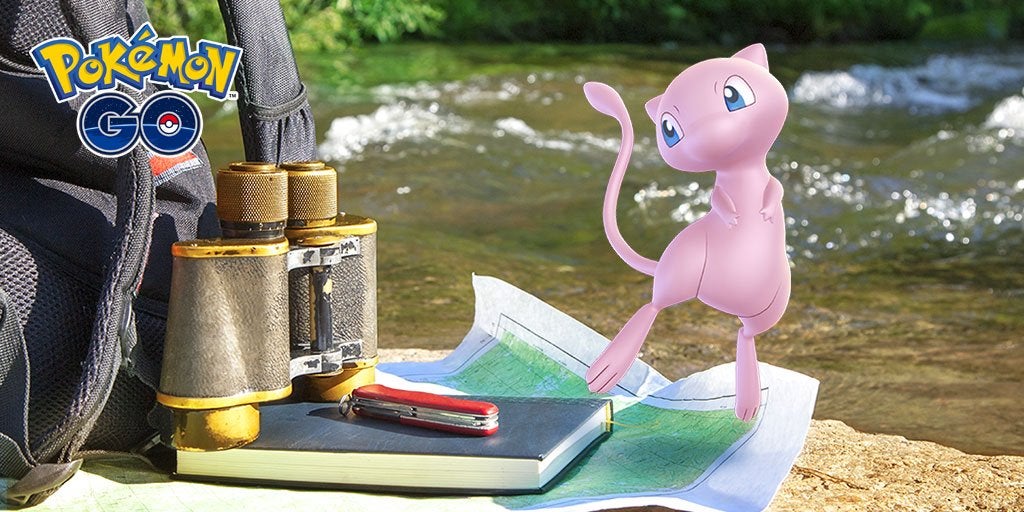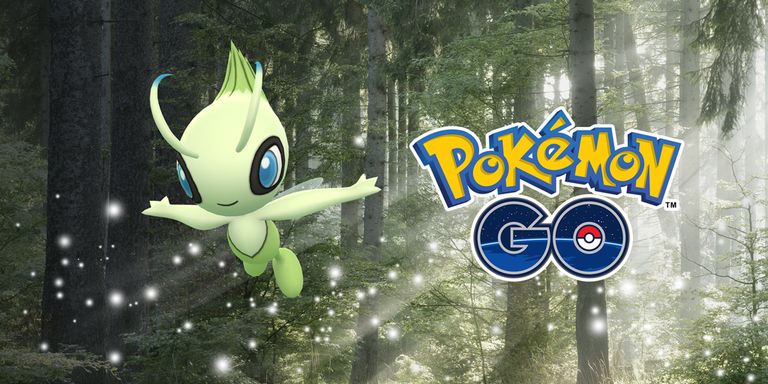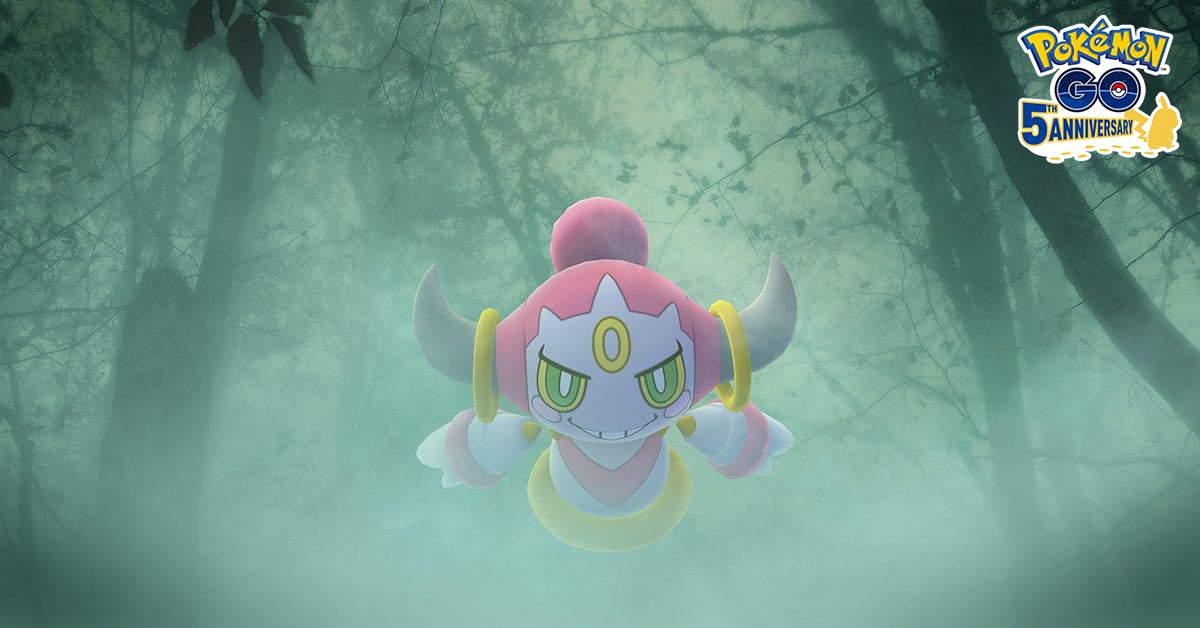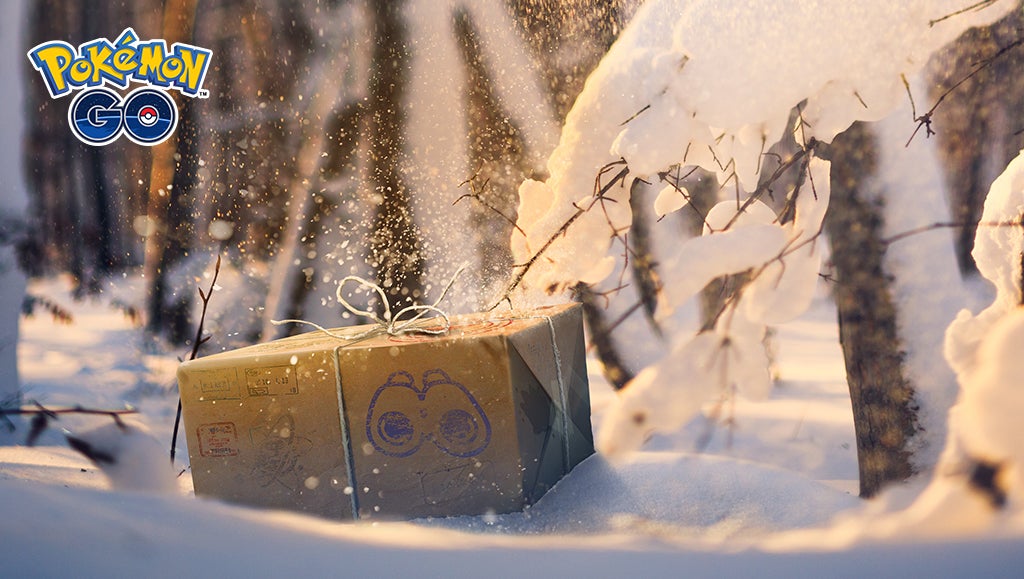Pokémon rarity in Pokémon Go, however, is not an exact science like it is in the mainline Pokémon series, since some Pokémon will become easier to find if you visit certain real world locations or partake in in-game events. Now that the Pokémon Go Pokédex spans from Gen 1 to Gen 8, we’ve created a rare Pokémon list, so you know which creatures you need to be on the lookout for - whether it’s in the wild, during an event or from a research quest. On this page: When hunting for rare Pokémon, it’s important to remember that certain factors, such as where you live, have an effect on which specific Pokémon are rare for you. If you live by the sea, for example, you’re more likely to encounter rare water-type Pokémon than someone who lives in a city. How often you play Pokémon Go also has an effect, with regular players often finding a rarer Pokémon more frequently due to having a higher Trainer Level. This is because your Trainer Level sneakily gates a selection of Pokemon from the wild spawn pool if you’re not certain levels - so the higher your Trainer Level, the more Pokémon species you can encounter. Finally, don’t forget that in-game events, like Community Day, have an effect on which Pokémon appear in raids, occasionally egg pools and in the wild, such as boosting specific types or particular Pokémon. Considering the release of new Pokémon, like the Ultra Beasts, and Daily Adventure Incense, we’ve updated our list of the Pokémon which are considered rare in Pokémon Go in July 2022:
Galarian Articuno, Galarian Zapdos and Galarian Moltres
Galarian Articuno, Galarian Zapdos and Galarian Moltres can only be encountered while using Daily Adventure Incense. This means you have 15 minutes per day to cover as much ground as possible in hopes of randomly finding one of these legendary birds. Catching Galarian Articuno, Galarian Zapdos and Galarian Moltres involves a good amount of luck, because they all share a base catch rate of 0.3% and a flee rate of 90%. It’s very reminiscent of hunting roaming Pokémon in the mainline games - you have that wonderful moment of finally finding them in the wild, only to have it vanish as they escape the Poké Ball before vanishing from sight. Just remember to use your Daily Adventure Incense every day, so you can, eventually, add these Pokémon to your collection!
Rotom
While Rotom has six forms, only two have been been released into Pokémon Go at the time of writing and, if you weren’t able to catch them during their small release windows, the only way to obtain Rotom is by trading with another player. Wash Rotom was originally only available to players who purchased a Go Fest 2020 ticket and had it photobomb one of their Go Snapshot pictures. It did, however, become available to all players during the Sixth Anniversary event in July 2022 and was the final reward for completing this event’s timed research quest. Mow Rotom was the second form to be released and, at the time of writing, was only avaliable to players who attended Go Fest 2022 Berlin or Seattle. There it could once again be found by having it photobomb Go Snapshot pictures. Hopefully Wash and Mow Rotom will return in the future, along with the release of this Pokémon’s other forms - Regular, Heat, Fan and Frost!
The Lake Guardians - Uxie, Mesprit and Azelf
Uxie, Mesprit and Azelf are the Lake Guardians of the Sinnoh and, despite being the only legendary Pokémon to appear in the wild outside of events and Daily Adventure Incense, they’re three of the rarest Pokémon in the game. This is due to two very important factors - they’re very rare spawn rate and that all three are regionally exclusive Pokémon. The Lake Guardians can be found in the following regions:
Uxie - Asia and Pacific regions Mesprit - Europe, Middle East, Africa and India Azelf - Americas and Greenland
So, even if you’re lucky enough to encounter one of the Lake Guardians in the wild, you’ll only ever find the one which lives in your region. Uxie, Mespirt and Azelf do make the occasional appearance in five-star raids and, through the power of Remote Raid passes and apps like Poke Genie, it’s possible to battle each of them no matter where you are.
Unown
The easiest way to find Unown is in the wild and in raids during special in-game events like Go Fest. They are also incredibly rare spawns outside of events - with emphasis on incredibly. If Arceus blesses you with such an encounter, we highly recommend using Golden Razz Berries to catch the Unown! The true challenge Unown offers, however, depends on how much of a completionist you are, because there are 28 Unown forms to collect! Since only a specific selection of Unowns appear in a small number of events each year, this is a challenge which will take you years to complete.
Salandit and Salazzle
At the time of writing, Salandit and Salazzle are two of the rarest Pokémon in the game. If you want to add their entries to your Pokédex, your quest begins by hatching a Salandit from a 12km egg - the only way to currently obtain one. These strange eggs can only be obtained by defeating a Team Go Rocket Leader, so you’ll need to start gathering Mysterious Components. We recommend gathering a good number of 12km eggs, because Salandit is part of Tier Three - the rarest tier - for this egg pool alongside Absol, Deino, Skorupi and Skrelp. This, however, isn’t the only area where you need luck on your side… Only female Salandits can evolve into Salazzle through the use of 50 Salandit candy, so, if you’ve hatched a male Salandit, it’s back to hatching those 12km eggs. At least you’ll have gathered Salandit candy for when you finally hatch a female one.
Sandile, Krokorok and Krookodile
Sandile is afflicted by the same curse as Salandit - 12km eggs. Thankfully, both male and female Sandiles can evolve, but, the downside, is that you need 125 candy to fully evolve this Pokémon. This means you either need to hatch a lot of Sandiles, spend a good amount of Rare Candies or start walking with it as your buddy. Sandile’s have, however, become slightly easier to hatch since they now sit on the second 12km egg pool tier alongside Pancham.
Tirtouga and Carracosta
Tirtouga debuted in Pokémon Go during January 2020 and, while it was previously available in 7km and 10km eggs for a while, it now appears in the wild or when you’re using Daily Adventure Incense. The problem, which you can probably see coming, is it’s incredibly rare spawn rate and, by that, we mean super rare - even when you’re using Daily Adventure Incense. If you spot a Tirtouga on your Pokémon radar, we highly recommend finding them as quickly as possible, because who knows when you’ll encounter one again. Once you’ve caught a Tirtouga, you can earn the 50 candy required for evolving it into Carracosta by either spending Rare Candy or having it as your buddy. Get ready to do a lot of walking - it may be some time before you see another Tirtouga again.
Archen and Archeops
Archen, like Tirtouga, can be found in the wild or when using Daily Adventure Incense at the time of writing and shares the same rare spawn rate. Personally, the only time I’ve ever seen an Archen is at four in the morning and, although I did go out to catch it, I obviously don’t recommend wandering about in the dark looking for Pokémon. Evolving an Archen into Archeops requires 50 Archen candy, so, again like Tirtouga, the easiest way to collect what you need is through Rare Candy or having it as your buddy Pokémon.
Jangmo-o, Hakamo-o and Kommo-o
Jangmo-o is the latest member of Pokemon Go’s rare dragon-type gang. While the Gen 7 Pokémon does appear in the wild and through Daily Adventure Incense, it’s a very rare spawn; so, if you find one, make sure you use some Pinap Berries to double your catch candy. Jangmo-o can also hatch from 10km, but it’s currently the rarest Pokémon in the 10km egg pool. Once you’ve caught a Jangmo-o, you’ll need 125 candy to fully evolve it into Kommo-o.
Axew, Fraxure and Haxorus
Axew is currently one of the rarest wild spawns and 10km egg hatches. If you’re lucky enough to spot Axew in the wild, we highly recommend using Pinap Berries, or the silver variant if you have one spare, to increase the amount of candy you’ll receive from catching. This is because you need 125 Axew candy to fully evolve the Pokémon into Haxorus and you may also want some extra candy to either power it up or unlock its second Charged move. When it comes to 10km eggs, Axew is currently sitting on the third tier alongside Riolu, Goomy and Noibat.
Noibat and Noivern
Noibat is currently a rare spawn in the wild and on the third tier of 10km eggs alongside Riolu, Goomy and Axew. Obtaining this Pokémon, however, is only half the battle, because you need 400 Noibat candy to evolve one into Noivern. This means you’ll need to either get lucky when it comes to finding Noibat, spend a lot of Rare Candy or get ready to have it as your buddy Pokémon for a long while.
Goomy, Sliggoo and Goodra
While Goomy does appear in the wild, it is currently quite a rare spawn. Goomy can also be hatched from 10km eggs, but, like finding it in the wild, you will need a tad of luck, because it sits on the three tier alongside Axew, Riolo and Noibat. To fully evolve Goomy, you need 125 Goomy candy and a Rainy Lure Module. This is because you can only evolve a Sliggoo into a Goodra at a PokéStop which is currently holding a Rainy Lure Module. These lures can be brought from the in-game 180 PokéCoins, but, if you don’t want to spend any money on the game, they are occasionally research quest rewards or you may find a PokéStop where someone has already used the Rainy Lure Module.
Deino, Zweilous and Hydreigon
Deino is yet another rare dragon-type Pokémon, with its rare spawn rate in the wild and hatching from 12km eggs; there it sits on tier three with Absol, Skorupi, Skrelp and Salandit. Thankfully, Deino had its own Community Day back in June 2022, which was the perfect time to this little dragon. Don’t worry if you missed this event or didn’t catch that many Deinos though, because, like previous years, the last Community Day event of 2022 will most likely involve all of the Community Day Pokémon from 2022 appearing more frequently in the wild. Once you’ve caught a Deino, you’ll need to gather 125 Deino candy to fully evolve it into Hydreigon. Due to the power of this Pokémon, however, it’s a good idea to gather some extra candy - through Rare Candy and having it as your buddy - to power it up or unlock this Pokémon’s second charged move.
Meltan and Melmetal
Every player can obtain a Meltan through the Let’s Go, Meltan special research quest, but the ease at which you’ll evolve it into Melmetal depends on whether you own Pokémon Home, Pokémon: Let’s Go Pikachu or Let’s Go Eevee. This is because, to open the Mystery Box which activates Meltan spawns, you must transfer at least one Pokémon from Pokémon Go to any of these three games. Once opened, the Mystery Box will last for an hour with a spawn rate of one Meltan per minute and you’ll have to wait three days until you can use it again. You’ll need 400 candy to evolve Meltan into Melmetal, so, even with Pinap Berries, you’ll have to use the Mystery Box a number of times. Without the Mystery Box, be prepared to use a lot of Rare Candy and have Meltan set as your buddy for quite a while.
Yamask, Cofagrigus, Galarian Yamask and Runerigus
Yamask makes this list, because it’s only available during the yearly Halloween event. So don’t play during Halloween? No Yamask for you. When Yamask is available, however, it can be found through a variety of means - from in the wild to event-exclusive field research tasks. While Galarian Yamask is a little harder to track down, it has been known to appear in raids, as a reward from field research, special research quests and, during the 2021 Halloween event, it was in the 7km egg pool. Yamask and Galarian Yamask evolve into different Pokémon - Cofagrigus for traditional Yamask and Runereigus for the Galar variant - and, while both require 50 candy to evolve, you need to get a Runereigus.
Spiritomb
While Spiritomb has, over the years, become easier to find, it can still only be caught during the yearly Halloween event. Originally it could only be obtained by completing a special research quest - A Spooky Message in 2018 and 2019, and A Spooky Message Unmasked in 2020 - but, in 2021, it was added to the Halloween event-exclusive field research tasks. We’ll have to wait and see how Spiritomb is disturbed in future Halloween events - just remember to play during the event if you don’t have one!
Ultra Beasts
Ultra Beasts are a collection of extradimensional Pokémon who hail from Ultra Space and debuted as part of Gen 7. There are 11 Ultra Beasts in total, with four so far appearing in Pokémon Go via five-star raids and one special research quest. Their rarity, however, comes from how each Ultra Beast’s release has been tied to a Go Fest event, meaning, if you didn’t partake in said event, you most likely don’t have this Ultra Beast. The first Ultra Beast to visit Pokémon Go was Nihilego, which appeared in five-star raids and as one of the rewards for the A Radiant World special research quest as part of Go Fest 2022 on Sunday, 5th June. In the following months, Pheromosa, Buzzwole and Xurkitree all saw their intial releases at Go Fest Berlin, Seattle and Sapporo. At the time of writing, these three Ultra Beasts have only been made available to players who attended their specific in-person event; only players who attended Go Fest Berlin, for example, have Pheromosa in their Pokédex currently. This, however, will all change on Saturday, 27th August when the Go Fest 2022: Finale event will occur. From 10am to 6pm (local time), Nihilego, Pheromosa, Buzzwole and Xurkitree will all be available. Come back later for updates! We don’t know when the fifth Ultra Beast will arrive in Pokémon Go, but hopefully we won’t see Blacephalon for a long while. Not a fan of Blacephalon…
Hisuian Pokémon
Hisuian Pokémon are regional variants hailing from the Hisui region; each one is a reworked version of a Pokémon from a past generation differing in both appearance and type. Like Galarian Pokémon, a number of Hisuian Pokémon, such as Sneasler, can only be obtained by evolving a Hisuian Pokémon. Some of these evolutions involve completing a special requirement, but, thankfully, the candy you collect for that specific Pokémon will work for its Hisui version. At the writing, Hisuian Pokémon are relatively new to Pokémon Go and, due to this, have had limited release windows. This means, if you didn’t obtain one during this time, the only way to currently collect Hisuian Pokémon is through trading. Hisuian Voltorb was the first Hisui Pokémon to be released in Pokémon Go to celebrate the launch of Pokémon Legends: Arceus back in January 2022; it’s evolution, Hisuian Electrode, was then released in February 2022. The next batch of Hisuian Pokémon, along with their evolution, arrived in July 2022 as part of the Hisuian Discoveries event. Hisuian Growlithe and Hisuian Sneasel could only be hatched from 7km eggs, while Hisuian Qwilfish also appeared in the raids. Meanwhile, Hisuian Braviary was only avaliable in three-star raids during a three hour window on Sunday, 31st July. If you want to add their evolutions to your Pokédex, check out our guides on evolving Hisuian Growlithe into Hisuian Arcanine, Hisuian Qwilfish into Overqwil and Hisuian Sneasel into Sneasler in Pokémon Go. There are still a number of Hisuian Pokémon waiting to be released, including Wyrdeer and Hisuian Zoruna!
Galarian Mr. Mime and Mr. Rime
Go Fest 2022 did make adding Galarian Mr. Mime and Mr. Rime, it’s evolution, to your Pokédex easier by having the Gen 1 variant appear more frequently in the wild. The downside, however, is that this bonus was only available to players who purchased a Go Fest ticket. This continues Galarian Mr. Mime’s trend of typically only being available through pay-to-play activities, such as the special research quest, Tap… Tap… Tappity-Tap, which saw the Pokémon initial release in December 2020. Thankfully, Galarian Mr. Mime was available to all players through a number of Holiday 2021 timed research quests in December 2021. Hopefully it will return in a similar fashion during future December events, because there’s currently no way of adding these Pokémon to your Pokédex, especially if you don’t want to partak in pay-to-play events. To get Mr. Rime, you need 50 Mr. Mime candy to evolve your Galarian Mr. Mime. Obviously, this task is easiest for European players who have the ‘pleasure’ of seeing Mr. Mime on a regular basis. If, however, you live outside of Europe, then the easiest way to obtain this candy is through Rare Candy or having the Pokémon as your buddy.
Alolan and Galarian Pokémon
Alolan and Galarian Pokémon are alternative variants - in both appearance and typing - for Pokémon from previous generations. Hisuian Pokémon have also started appearing in Pokémon Go, but, since they’ve only been available for limited time periods, we’ve given them their own section above Galarian Mr. Mime. A number of the Galarian Pokémon evolve into new Pokémon, such as Galarian Farfetch’d into Sirfetch’d, which, in Pokémon Go, requires you to meet a special requirement to complete. The easiest way to obtain these Pokémon is by hatching 7km eggs you’ve collected outside of in-game events, due to how many events change the 7km egg pool. Both Alolan and Galarian Pokémon have also been known to appear in the wild or in raids during specific events, such as Community Days. Galarian Articuno, Galarian Zapdos and Galarian Moltres, however, can only be found while using Daily Adventure Incense. You can learn more about these legendary bird variants at the top of this list! When it comes to collecting these Pokémon we recommend focusing on those which evolve into new Pokémon, such as Galarian Meowth and Galarian Yamask.
Regionally exclusive Pokémon
When it comes to regionally exclusive Pokémon, rarity is a subjective matter. European players plagued by Mr. Mime may long for a Corsola or Tauros, while American trainers may desperately want the sinister Gen 1 Pokémon and its tiny offspring, Mime Jr. No matter where you live, regionally exclusive Pokémon can be found in the wild or hatched from eggs depending on your region. Some regionally exclusive Pokémon, like Solrock and Lunatone, rotate their locations during specific events and remain in these locations until the next year’s event occurs. This gives players who’ve not caught these Pokémon yet the chance to add them to their Pokédexs. Meanwhile, special events, like Go Fest, have also seen specific regionally exclusive Pokémon appear in the wild or raids. It should be noted, however, that you may need to purchase a ticket to said event for these Pokémon to appear.
Shiny Pokémon
Shiny Pokémon are rare Pokémon with alternative colourings to their traditional forms and, while not every Pokémon has had their shiny form released in Pokémon Go, those which have are very collectible. Encountering shinies all depends on having that Pokémon’s shiny odds be in your favour for the encounter you’re currently having. Certain events, like Community Days, do increase the odds of shiny Pokémon appearing, while catching Pokémon of the same type will naturally increase your chances of finding shiny Pokémon. It’s important to note that certain shiny Pokémon are rarer than others and you can learn more on our shiny Pokémon guide.
Clone Pokémon
Clone Pokémon are a set of four Costume Pokémon - Clone Venusaur, Clone Charizard, Clone Blastoise and Clone Pikachu - that, at the time of writing, have only been available in Pokémon Go between 25th February to 2nd March 2020. Due to their very limited release, the only way to currently obtain a Clone Pokémon is through trading. The Clone Pokémon were part of the celebrations for Pokémon Day 2020 and the release of Pokémon: Mewtwo Strikes Back - Evolution, which is the remake of the first Pokémon movie, in Pokémon Go. As a homage to these films, the Clone Pokémon all share the same design as the clones Mewtwo creates, such as Clone Charizard having brown stripes. At the time of writing, there’s been no sign of the Clone Pokémon returning to Pokémon Go or the release of new Clone Pokémon, such as Ninetails or Vaporeon. Nor can you recreate the famous Clone Pikachu slap.
Costume Pokémon
Costume Pokémon are special outfit-wearing-Pokémon which appear throughout different events across the year in Pokémon Go. These outfits can range from Halloween costumes to hats to flower crowns, which, honestly, look like three flowers stapled to a Pokémon’s head. Their rarity stems from how each Costume Pokémon’s availability is linked to an event and how some, like the Clone Pokémon or Star Hat Pikachu, have only been available once. Some also require you to buy a ticket to an in-game event like Go Fest or Go Tour: Kanto. This means if you missed the event, didn’t wish to pay for an event ticket or hadn’t started playing Pokémon Go at the time, the only way to obtain this Pokémon by trading with another player. Thankfully some Costume Pokémon - though mostly those with flower crowns - do make repeat appearances in different events. The method used to catch a costume Pokémon depends on the event, but they have been known to appear in the wild, in raids, hatched from eggs and rewards from both research quests and Collection Challenges. Pikachu Libre, however, can only be obtained by reaching Rank 24 in the Go Battle League. Obtaining this special Pikachu can be quite the task, especially if you’re not experienced in Pokémon Go’s PVP side. Thankfully, we have guides on recommended Pokémon for the Great League, Ultra League and Master League to help you achieve this goal. We also recommend starting your journey to Rank 24 at the beginning of a new season, so you have a full three months to achieve this goal. Finally, there is also currently one regionally exclusive Costume Pokémon - Okinawan Kariyushi Shirt Pikachu - which can only be found in the Okinawa prefecture of Japan, which, unsurprisingly, makes it a very rare Pokémon for many players.
Legendary Pokémon
Since the majority of legendary Pokémon debut in five-star raids, rarity stems from how hard they are to defeat and how long you need to wait for them to appear in said raids rather than their spawn rate. If you don’t have many legendaries in your Pokédex - be it because you’re a new player or don’t partake in many five-star raids - then we recommend either joining a local Pokémon Go group or using Remote Raid Passes and apps like Poke Genie. When it comes to actually catching the legendary - always make sure you’re using either Golden Razz or Silver Pinap Berries to increase your chances of catching the Pokémon. It’s also a good idea to watch the Pokémon for a bit to learn their move pattern and know when the best moment to throw your Poké Ball is. Outside of five-star raids, legendary Pokémon have also been known to appear as Research Breakthrough rewards - though, at the time of writing, it has been a considerable while since this last occurred - and Shadow variants can be caught by defeating Giovanni. They also appear as rewards from the Go Battle League once you reach Rank 20. To obtian a legendary through this method you need to win enough matches in a set to unlock a Pokémon reward, then catch Pikachu Libre. After doing so, any Pokémon reward you unlock has the chance of being the current five-star raid boss. As mentioned previously, the Galarian variants of the legendary bird trio can only be found when using Daily Adventure Incense. Meanwhile, Azelf, Mesprit and Uxie also appear in the wild, as have the legendary dogs during Go Tour: Johto.
Mythical Pokémon
Mythical Pokémon, such as Mew, Celebi and Meloetta, make an appearance on this guide, because the only way to obtain them is by completing their special research questlines. How long it takes you to complete each questline depends on your experience with Pokémon Go and how often you play. Once you’ve completed it, however, you’ll be rewarded with a mythical Pokémon that you can’t trade, which means each account can only have one of each mythical Pokémon. Unless, of course, you’ve gained access to a shiny mythical Pokémon quest. At the time of writing, only two of such quests have been released in Pokémon Go - All-in-One #151 and Distracted by Something Shiny. Despite not having a deadline, both of these quests were only available for a short period of time - All-in-One #151 was only available to players who purchased a Go Tour: Kanto ticket - so these shiny Pokémon are no longer available for newcomers. Shaymin - a mythical Pokémon from Gen 4 - also has been released, but, at the time of writing, is only available to players who purchased a Go Fest 2022 ticket or attended an in-person Go Fest 2022 event; Land Forme Shaymin is earned through the Pokémon Go Fest 2022 special research quest, while Sky Forme Shaymin is unlocked through the special research quests for Go Fest 2022 Berlin, Seattle or Sapporo. Sky Forme Shaymin will also be available during the Go Fest Finale in August 2021 for ticketed players. Below you can find a list of all the mythical Pokémon currently released in Pokémon Go, along with their associated quest and when they’re unlocked:
Mew - A Mythical Discovery (Requires Trainer Level 15) Celebi - A Ripple in Time (Unlocks upon reaching Step 4 of A Mythical Discovery) Jirachi - A Thousand-Year Slumber (Unlocks upon reaching Step 7 of A Ripple in Time) Victini - Investigate a Mysterious Energy (Unlocks upon reaching Step 6 of A Thousand-Year Slumber) Meloetta - Finding Your Voice (Unable to confirm unlock method)
There are, however, two mythical Pokémon who are harder to obtain… These Pokémon are Zarude and Hoopa - both of which can only be obtained by completing special research quests, which themsevles were only available for a limited amount of time. Zarude’s quest, Search for Zarude, could only be obtained between 1st October to 10th October in 2021, while Hoopa’s quest, Misunderstood Mischief, was only unlockable from 1st September to 1st December 2021. Since mythical Pokémon can not be traded and neither special research quest is currently available, it is, at the time of writing, impossible to get Zarude or Hoopa in Pokémon Go. If you’re missing one of these mythical Pokémon, you’ll simply have to wait and see if they return in the future.
Kecleon
Where is our chameleon? The Season of Mythical Wishes continues with the Winter Holiday event, which has brought Mega Glalie to Pokémon Go. Don’t forget to partake in the new Go Battle League season. Elsewhere, be sure to use Daily Adventure Incense for the chance of encountering Galarian Articuno, Galarian Zapdos and Galarian Moltres.
Increase your Trainer Level! As your Trainer Level increases, so does the variety of Pokémon you can encounter. This means a Level 30 player has a higher chance of encountering a rare Pokémon than a Level 10, so make sure you’re catching Pokémon, completing research quests and using Lucky Eggs to double the amount of XP you’ll receive. Use Incense and Lure Modules. Both of these items attract Pokémon to your location and, if you’re lucky, one of these may be a rare Pokémon. Incense is especially useful for rural players who may not have many Pokémon appearing in their location naturally. Meanwhile, once a Lure Module has been used on a PokéStop, any player can enjoy the bonus. Use your Daily Adventure Incense every day! Daily Adventure Incense may only last for 15 minutes, but it gives you the chance to encounter some rare Pokémon - from Jangmo-o to Tirtouga. It’s also the only way to find and, hopefully, catch Galarian Articuno, Galarian Zapdos and Galarian Moltres. Trade with other players. Thanks to the inclusion of trading in Pokémon Go during 2018, you can now trade rare and even legendary Pokémon with other players. This is perfect if you meet someone who has a regionally exclusive Pokémon you don’t have or one you’ve been searching for. Just remember - you can’t trade mythical Pokémon and you must be in a specific range to the person you’re trading with. Hatch eggs. Eggs are one of the easiest and most effective ways of obtaining some of the more elusive Pokémon on the above list, because they offer you the chance to find creatures which don’t typically appear in your local area. It’s best to prioritise 12km and 10km eggs, because they offer rarer Pokémon than 5km and 2km eggs. When it comes to 7km eggs, however, it’s always best to check the egg pool as it can change during events.
Pay attention to in-game events. The Pokémon Go events are the best time to catch new Pokémon whose spawn rate might drastically drop after the event ends or to find rare Pokémon like Unown. These events are also when you’ll be able to find costume Pokémon or special research quests which are only available for a limited time. Certain types of Pokémon prefer specific habitats. While it’s not obvious on the in-game map, the real world locations you visit while playing Pokémon Go will have an effect on which Pokémon you encounter. You’re more likely to encounter water-types while playing near the sea or a lake, while steel-type Pokémon are more likely to appear in urban areas, such as cities. Playing in different locations will help you find new Pokémon and maybe even that rare spawn you’re been looking for. Use Remote Raid Passes for five-star raids. If you want to add some legendaries to your Pokédex, then Remote Raid Passes are the way to go. With them and apps like Poke Genie, you can easily access raids against legendary Pokémon from across the world. Currently one Remote Raid Pass costs 100 PokéCoin, while three Remote Raid Passes costs 300 PokéCoins, which can either purchase using real world currency or earn by keeping Pokémon in Gyms. Look for, or research, Pokémon nests in your local area. Pokémon nests are clusters of Pokémon, from common to rare spawns, which repeatedly appear in the same location. Sometimes, however, they can only appear once, so make sure you catch as many Pokémon as possible if you find one. You’ll naturally encounter the occasional Pokémon nest as you play, but, if you want to find the one nearest to you, The Silph Road subreddit has created this hand Global Nest Atlas.
Earn Catch Bonus medals. Every Pokémon type has a related Catch Bonus medal, which you level up by catching Pokémon of that specific type. The Hex Maniac page, for example, is the Catch Bonus medal for ghost-type Pokémon and increasing its level - such as from Bronze to Silver - will give you a bonus every time you catch a ghost-type Pokémon. This means that catching low-level Pokémon naturally increases your chances of getting rarer creatures. Complete your Special Research quest. Staying on top of your special research quests will help you catch mythical Pokémon like Mew and Shadow variants of legendary Pokémon. These Shadow variants are especially useful, because it may help you add a legendary Pokémon which hasn’t been available for a while to your Pokédex. When in doubt - catch every Pokémon you see. Just because a Pokémon is a common spawn, doesn’t mean catching it won’t assist you on your journey to becoming a Pokémon Master. Every Pokémon you catch will give you some XP and count towards a Catch Bonus medal, while others may provide you with candy for an evolution which hasn’t been introduced into the game yet. It’s also worth catching any evolved Pokémon you see, because they will provide you with more candy than their pre-evolved form. All of these factors will help you slowly gather every Pokémon you need to complete the Pokédex.
Good luck completing your Pokédex!
